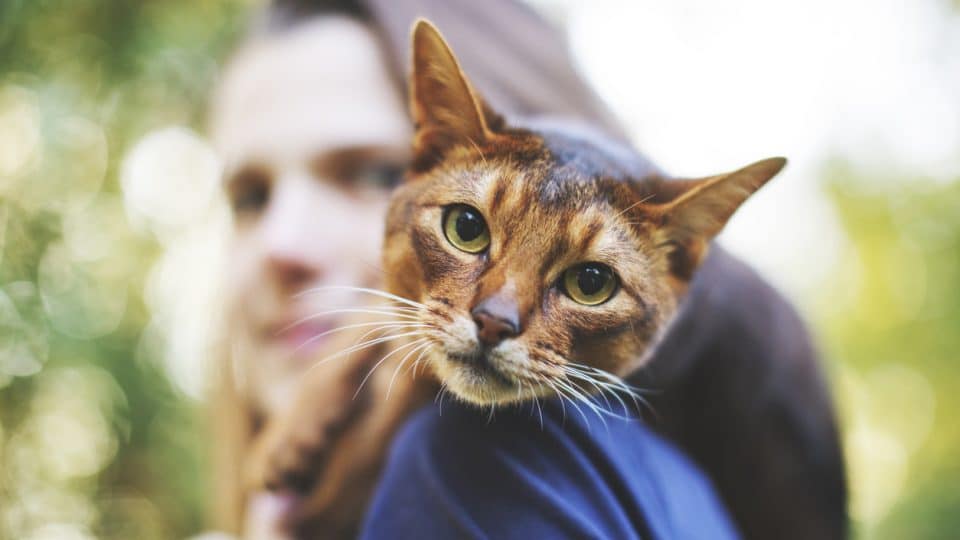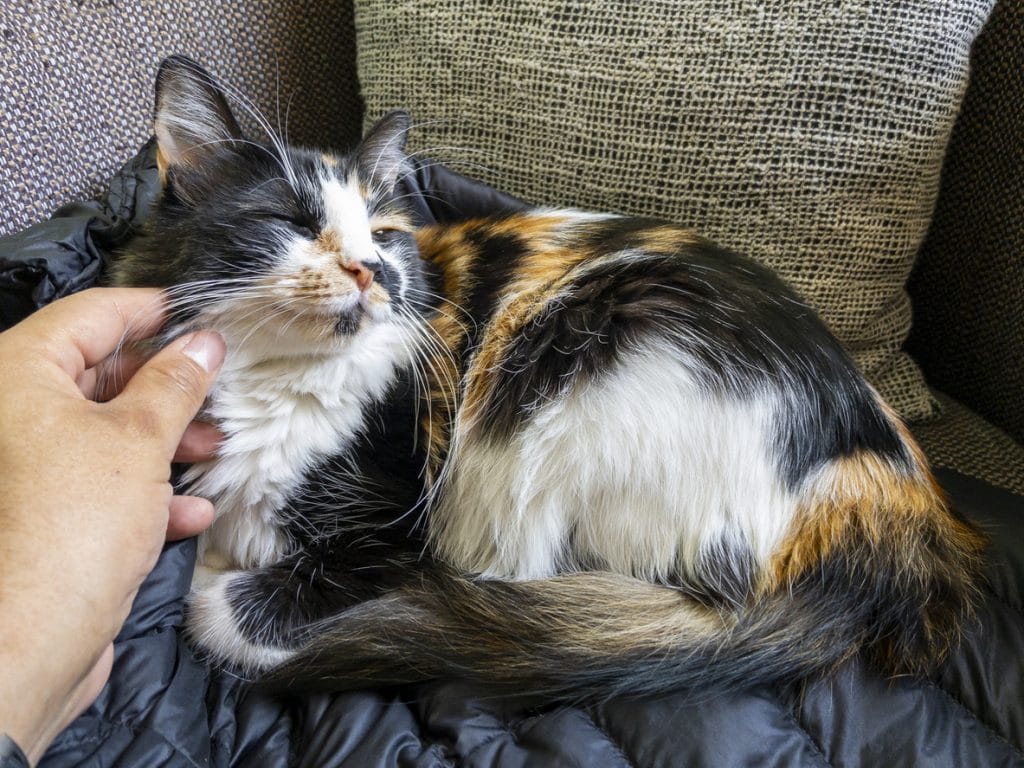Many people are lucky to have cats as family members, so you won’t be alone if you’ve ever wondered what breed your pet is. Some people select their cats from a breeder, knowing the pet’s breed ahead of time. But many people adopt from rescue centres or find cats along the way that become part of their household. In this case, it takes a little digging to establish your cat’s breed—especially since most cats are mixed-breed.
“Over 96% of cats on the planet are mixed breed and not under controlled breeding (meaning they choose their own mates),” says Certified Cat Behaviour Consultant Dr Mikel Maria Delgado, PhD. Purebred cats are those that humans have selectively bred over a period of time for specific physical traits.” Dr. Delgado notes that selective breeding limits the gene pool, and it’s important to be aware of the increased risks of certain health problems.
Below, we examine the research and consult with Dr. Delgado about what traits and markers can help you discover your cat’s breed, as well as why this information can be important.
8 Ways To Identify Your Cat’s Breed
Given the breadth of cat breeds, how can you tell what yours is? There are some clues in the cat’s physical appearance that can help determine this. Features such as face shape, body type, fur colour, and length can all be indicators.
The International Cat Association (TICA) recognises 73 breeds, while the Cat Fanciers Association (CFA) recognises 45. Either way, that’s a lot of different cat breeds! Today’s cats are not domesticated along the same lines as dogs. While sometimes affectionate, felines are still largely self-sufficient and capable of hunting. From deities and popular depictions in art and literature to the first type of pet cloned, cats have shown themselves to be a special part of humans’ lives and continue to be loved companions.
Most cat breeds today link back to the indigenous felines of their regional origin. Domesticated thousands of years ago, people are thought to have developed mutually beneficial relationships with cats as they became more agricultural—after all, they are exceptionally good at fending off rodents.
1. Size of your cat
When it comes to size, medium cats (with a healthy weight of between four to seven kilograms) are the most common. However, small breeds (under four kilograms) or large breeds (over seven kilograms) exist, too—albeit less common.
Below are some examples of cat breeds in the three different size classifications.
| Cat Size | Weight | Breed |
| Small or dwarf sized | <4kg (10 pounds) | Singapura, Munchkin, Napoleon, Bambino, American Curl, Balinese, Cornish Rex, Japanese Bobtail |
| Medium-sized cats | 4-7kg (10-15 pounds) | Siamese, Burmese, Abyssinian, American Shorthair, Russian Blue, Ocicat, Manx, Sphynx, Korat, American Wirehair, Chartreux, Scottish Fold |
| Large cats | >7kg (15 pounds) | Maine Coon, Ragamuffin, Savannah Cat, Chausie, Siberian, Norwegian Forest Cat |
2. Fur colours and patterns
There can be a lot of variance in fur colour, patterns and markings, but some of these characteristics can help signify certain breeds. However, patterns can be found in more than one breed and in mixed or pure breeds. Colours and combinations you’ll often see are solid black, grey or white/cream; bi-colour such as a tuxedo, tabby, and harlequin; tortoiseshell; and calico.
Here are a few examples of cat breeds you’ll find with different coat patterns. Again, there is some overlap between breeds, so while this may help you narrow things down, other features may be more helpful in determining what type of cat you have.
| Cat fur colour or markings | Possible cat breed |
| Solid colour | Siberian, Russian Blue, Bombay, Persian |
| Bi-colour | Maine Coon, Manx, Exotic Shorthair, Cornish Rex, Turkish Van, British Shorthair, Cymric |
| Tortoiseshell | American Shorthair, British Shorthair, Japanese Bobtail, Cornish Rex |
| Calico | Manx, American Shorthair, Persian, Devon Rex, Scottish Fold, Arabian Mau, Japanese Bobtail, Cornish Rex |
| Points | Siamese, Tonkinese, Birman, Himalayan, Balinese, Snowshoe |
3. Hair length and patterns
Cats, in addition to different colouring and patterns, also have different lengths and types of fur. There are four basic types of coats cats can have: long, short, curly, and no hair. Since some types of coat are the result of recessive genes (such as long hair) and specific mutations (curly and no hair), the type of fur may be a helpful indicator of your cat’s breed.
| Fur type | Cat breed |
| Long hair | Persian, Birman, Himalayan, Japanese Bobtail, Maine Coon, Ragamuffin, Turkish Angora, Siberian |
| Short hair | American Shorthair, Abyssinian, Manx, Russian Blue, Bengal, Siamese |
| Curly hair | LaPerm, American Wirehair, Cornish Rex, Selkirk Rex, Devon Rex |
| No hair | Sphynx, Peterbald, Donskoy, Bambino, Elf |
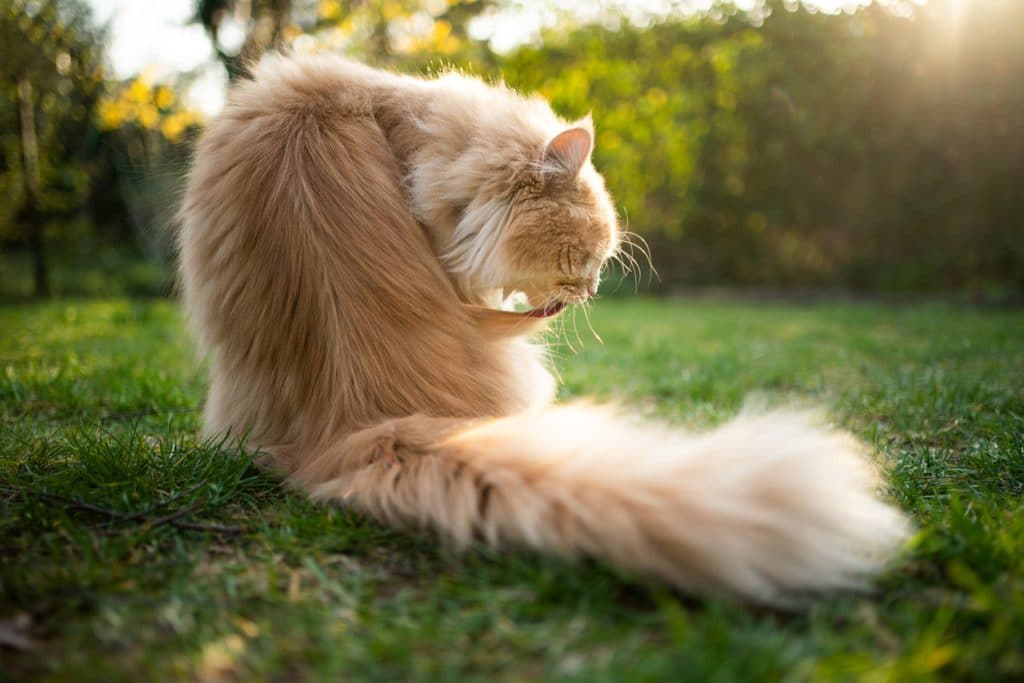
iStock/Nils Jacobi
4. Face shape
It’s less common to identify cat breeds by face shape unless they have a flat or narrow face. Cats with flat faces include the Persian, Munchkin, Scottish Fold, Exotic Shorthair, and Selkirk Rex. Narrow faces can be seen in Siamese, Cornish Rex, and Abyssinian cats.
It’s important to keep in mind that flat-faced cats, also known as brachycephalic breeds, are more susceptible to certain health risks. “These health problems include issues with breathing, Chiari malformations (cavities in the spinal cord near the skull), chronic eye discharge, and dental disease,” says Dr. Delgado. “Because of the limited gene pool from inbreeding, Persian cats are also at higher risk than other cats for polycystic kidney disease.”
5. Tail length
Most cat breeds possess similar tails that would be hard to distinguish from one another, which is why it’s not a common trait when it comes to identifying a particular breed.
However, short tails can be markers of certain breeds. Some common domestic cat breeds with short tails are the Manx, Japanese Bobtail, American Bobtail, Highlander, American Lynx, and Cymric.
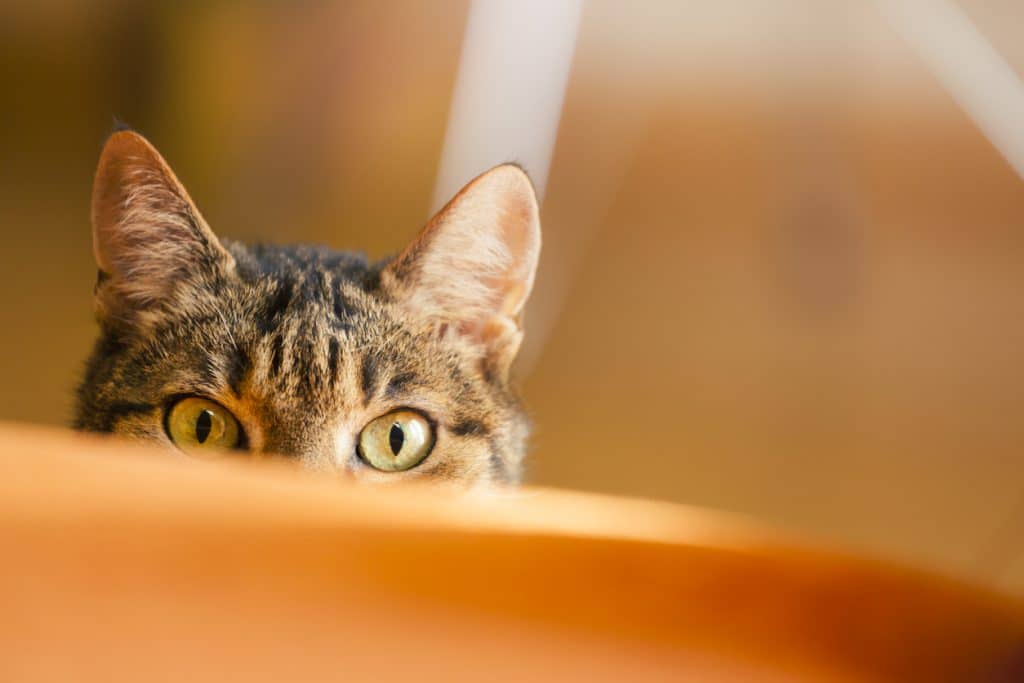
iStock/spooh
6. Ear shape and features
Your cat’s ears may give you a clue to their breed type as some ear features are quite distinctive. There are three unique types of ear features: curled, folded and ear tufts and furnishings.
It’s important to note that cats with curled or folded ears may experience certain health issues. For example, Scottish Folds suffer from osteochondrodysplasia, which is a cartilage abnormality that affects bone development and may lead to severe arthritis. Additionally, cats with curled ears, such as the American Curl, may have trouble cleaning their ears or easily experience damage to their ears and ear health.
Below are some examples of cat breeds with distinct ears.
| Ear type | Cat breed |
| Curled | American Curl, Highlander, Elf |
| Folded | Scottish Fold, Ukrainian Levkoy, Foldex |
| Tufted Ears, Lynx Tips, or Ear Furnishings | Maine Coon, Ragdoll, Norwegian Forest Cat, Pixie Bob, Turkish Van, Siberian, LaPerm, American Lynx |
7. Eye colour
Eye colour isn’t necessarily an indicator of breed, so it’s unlikely to be a go-to when identifying your cat—but your pet’s eye colours are still really cool! The most common colours are blue, green, yellow, and hazel, or some variation of those colours.
Your cat may also have a condition called heterochromia, which is when each eye is a different colour. Some cat breeds where this condition is more common include Turkish Angora, Turkish Van, Persian, Siamese, Khao Manee, Sphynx, Munchkin and Cornish Rex.
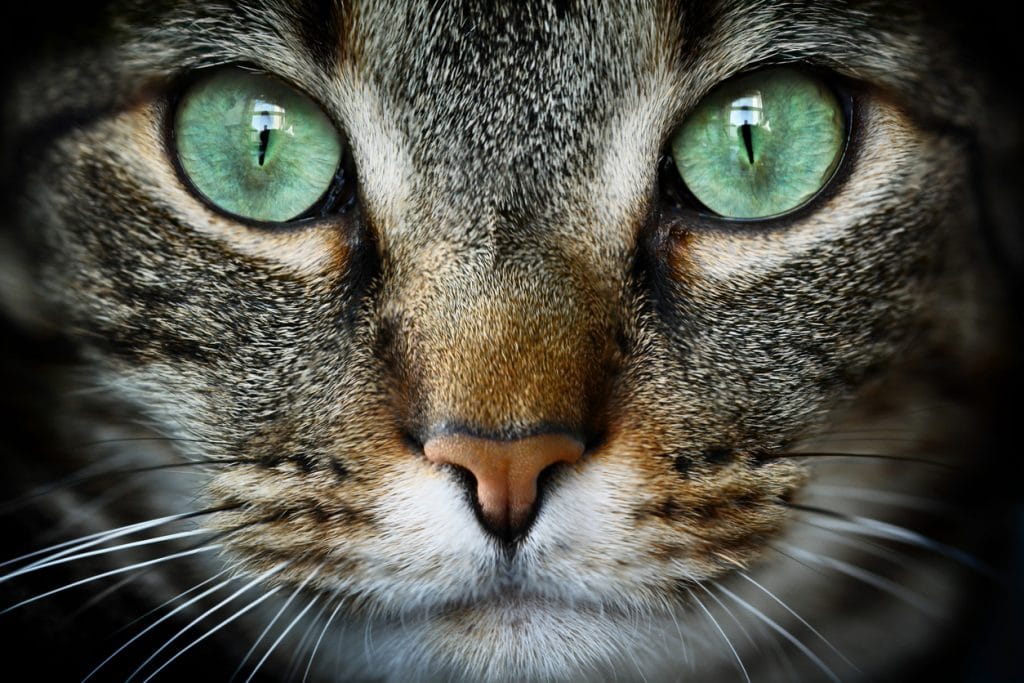
iStock/nico_blue
8. Behaviour and personality
Cats, like people, have unique personalities. “There is not a lot of strong evidence that breeders cultivate cats for personality,” says Dr. Delgado. This 2019 study in Scientific Reports, however, found that there were breed differences in social and non-social behaviours among 19 breed groups in a controlled environment. The findings include such observations as the Korat and Devon Rex being the most likely to seek contact from people, and British Shorthair, Ragdoll, Persian, Norwegian Forest Cat and Saint Birman cats as being the least aggressive.
Further studies are necessary to more strongly establish a link between breed and personality.
At-Home Tools for Working Out Your Cat’s Breed
Still not quite sure about your cat’s breed? The following tools may be able to help:
- Use apps, such as Cat Scanner, to take or upload a photo or video and identify your cat’s breed (even mixed breeds) in seconds.
- Online quizzes can help you narrow down your cat’s breed or even help you identify what breeds are a good match for you if you’re a prospective cat parent.
- Want more certainty? Go with DNA Testing. Dr. Delgado especially likes Basepaws.
- Consult your vet.
Takeaway
There are several physical traits and indicators of your cat’s breed, but you’ll need to look at their size, colouring, ears, fur type—and possibly face and tail—to help narrow it down. Eyes and certain personality traits may be clues but are less reliable sources of identification.
In particular, if you’ve welcomed or are planning to welcome a pure-breed cat into your home, it’s important to do your research and learn about any potential conditions or associated health problems.
“Learning about your cat’s genetic makeup can be fun,” says Dr. Delgado, “and DNA tests can also see if your cat is a carrier or at higher risk for certain health conditions.”
